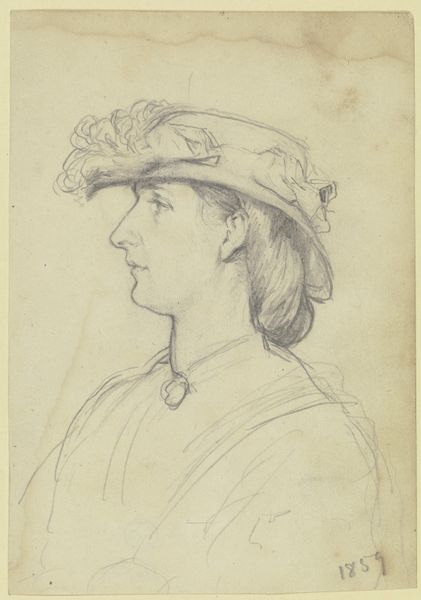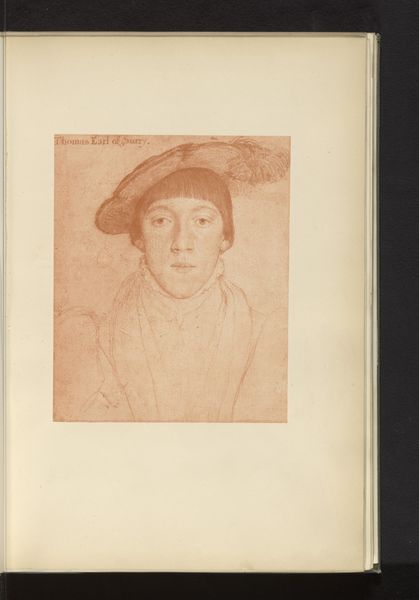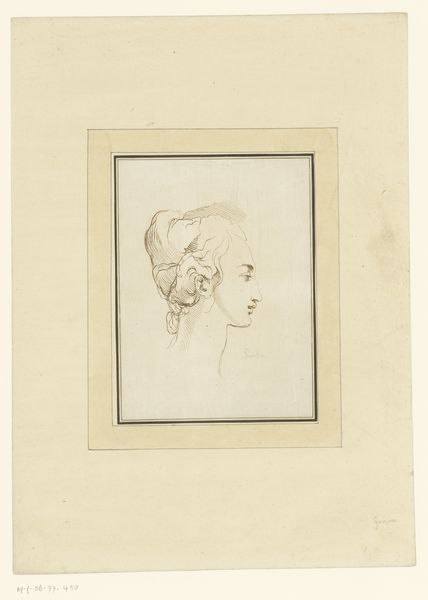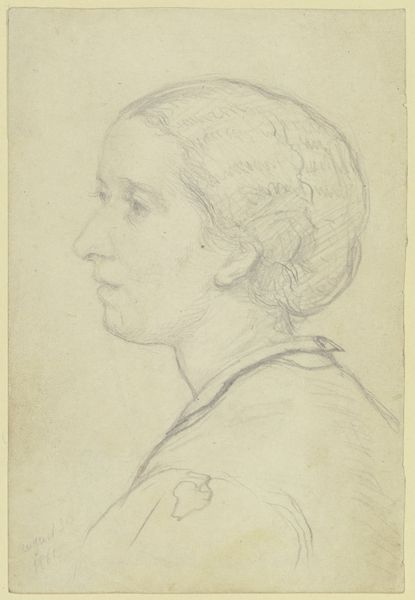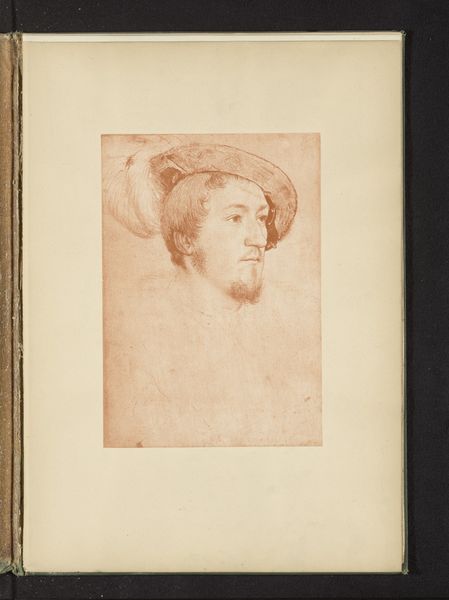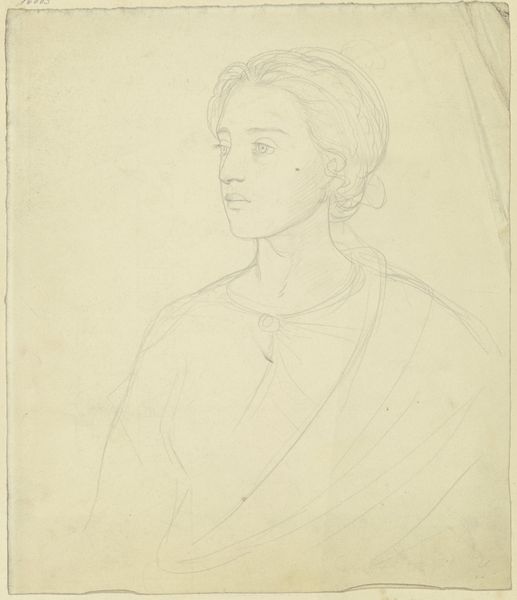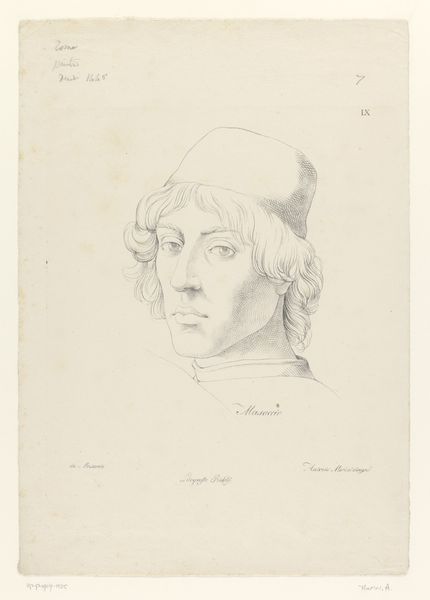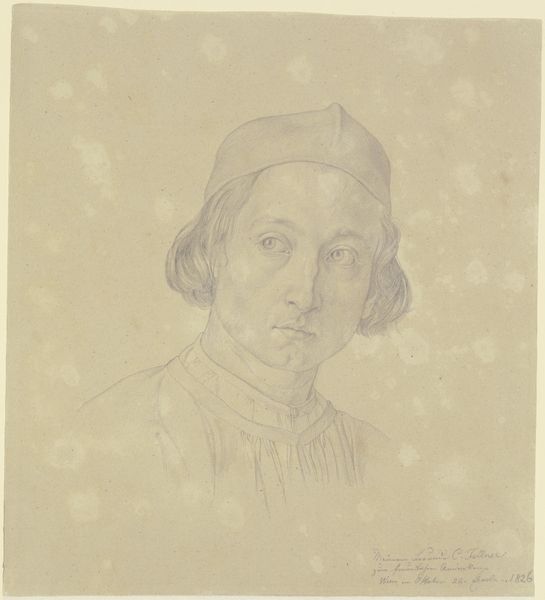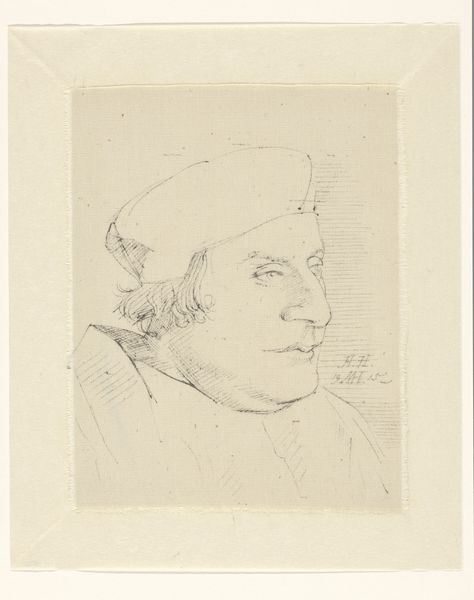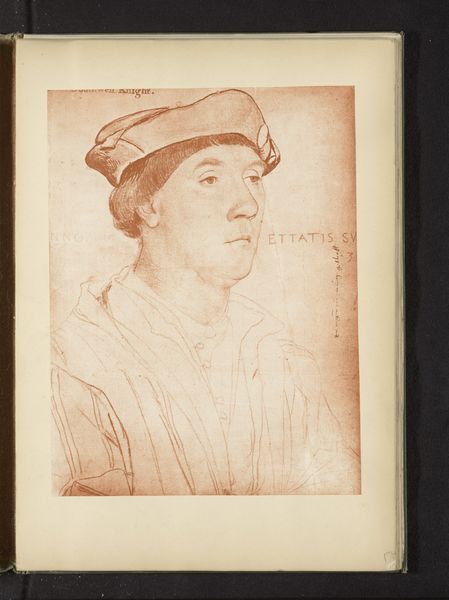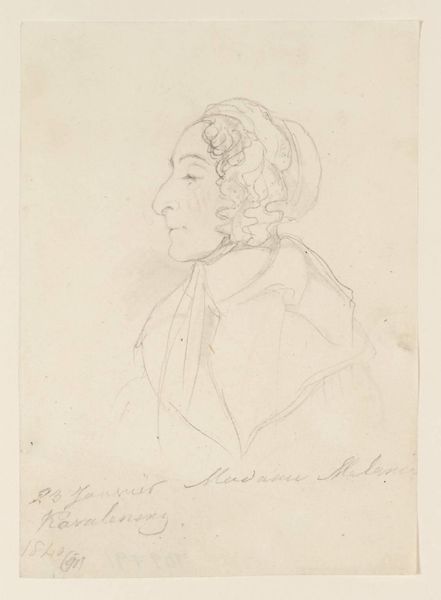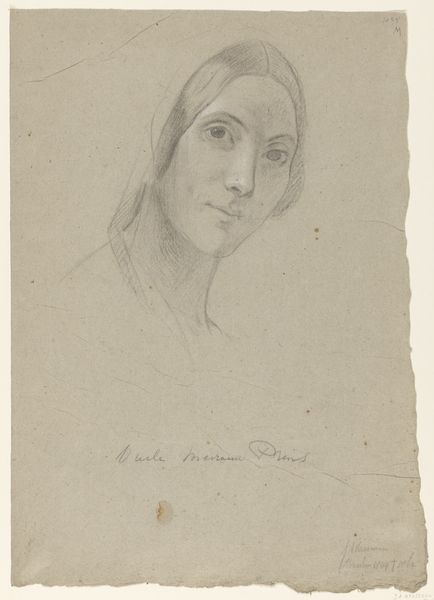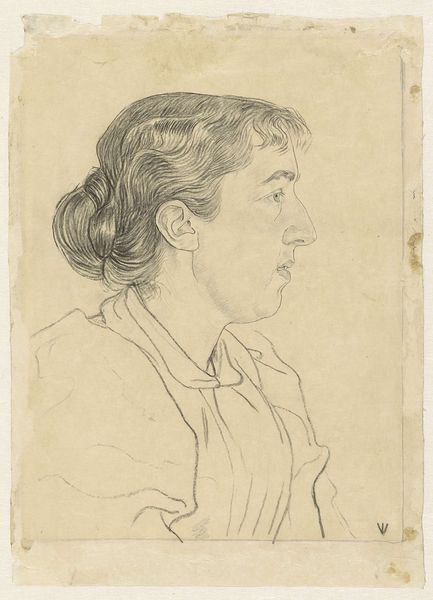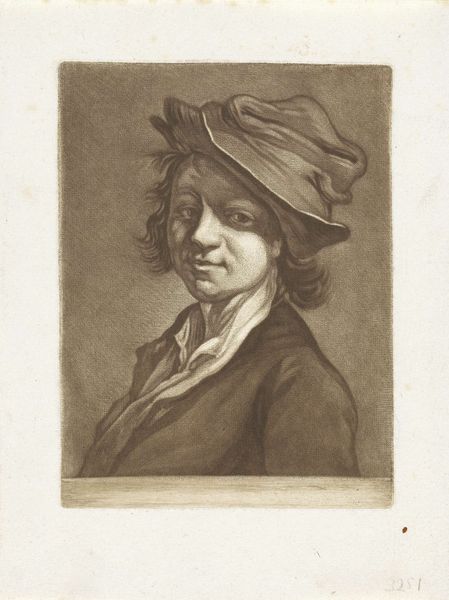
drawing, pen, engraving
#
portrait
#
drawing
#
caricature
#
pen
#
engraving
#
realism
Dimensions: height 232 mm, width 191 mm
Copyright: Rijks Museum: Open Domain
Georg Friedrich Schmoll created this portrait of Niklaus Manuel, using etching techniques, during the 18th century. It offers insight into the cultural reverence for the past, specifically the Renaissance, during the Enlightenment. The inscription "Nach Holbein," meaning "after Holbein," indicates that this print is a copy of a work by the earlier master Hans Holbein the Younger. This act of replication reveals the institutional power of the art canon, where older works, deemed significant, are reproduced and circulated for study and appreciation. Schmoll's choice to emulate Holbein, a painter known for his portraits of prominent figures, demonstrates an interest in aligning himself with established artistic traditions. To truly understand this work, one might consult inventories of collections, records from academies, and biographies of artists of the period to fully appreciate the social and institutional forces at play in 18th-century art.
Comments
No comments
Be the first to comment and join the conversation on the ultimate creative platform.
